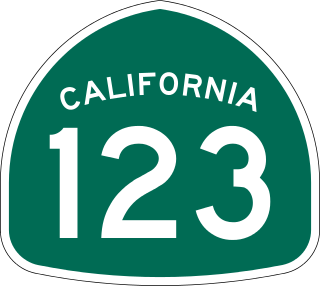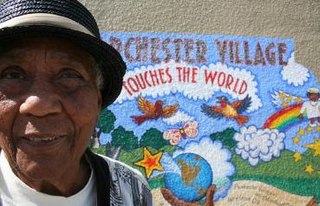Related Research Articles

Richmond is a city in western Contra Costa County, California, United States. The city was incorporated on August 7, 1905, and has a city council. Located in the San Francisco Bay Area's East Bay region, Richmond borders San Pablo, Albany, El Cerrito and Pinole in addition to the unincorporated communities of North Richmond, Hasford Heights, Kensington, El Sobrante, Bayview-Montalvin Manor, Tara Hills, and East Richmond Heights, and for a short distance San Francisco on Red Rock Island in the San Francisco Bay. Richmond is one of two cities, the other being San Rafael, that sits on the shores of both San Francisco Bay and San Pablo Bay.

Contra Costa County is a county located in the U.S. state of California, in the East Bay of the San Francisco Bay Area. As of the 2020 United States Census, the population was 1,165,927. The county seat is Martinez. It occupies the northern portion of the East Bay region of the San Francisco Bay Area and is primarily suburban. The county's name refers to its position on the other side of the bay from San Francisco. Contra Costa County is included in the San Francisco–Oakland–Berkeley, CA Metropolitan Statistical Area.

East Richmond Heights is an unincorporated community and census-designated place (CDP) in western Contra Costa County, California, United States. Its population was 3,280 at the 2010 census.

El Cerrito is a city in Contra Costa County, California, United States, and forms part of the San Francisco Bay Area. It has a population of 25,962 according to the 2020 census. El Cerrito was founded by refugees from the 1906 San Francisco earthquake. It was incorporated in 1917 as a village with 1,500 residents. As of the census in 2000, there were 23,171 people, 10,208 households and 5,971 families in the city.

Kensington is an unincorporated community and census designated place located in the Berkeley Hills, in the East Bay, part of the San Francisco Bay Area, in Contra Costa County, California. In the 20th century it was considered part of Berkeley, although it is across the county line. House numbers follow the pattern used in Berkeley, and Kensington shares two zip codes with the Berkeley Hills area.

San Pablo is an enclave city in Contra Costa County, California, United States. The city of Richmond surrounds nearly the whole city. The population was 29,139 at the 2010 census. The current Mayor is Rita Xavier. Currently, the City Council consists of Arturo Cruz, Elizabeth Pabon-Alvarado, Abel Pineda and Patricia Ponce. Pineda is the Vice Mayor, and Cruz, Pabon-Alvarado, and Ponce are Council Members. Dorothy Gantt is the city Clerk. Viviana Toledo is the city Treasurer.

Bella Savitzky Abzug, nicknamed "Battling Bella", was an American lawyer, politician, social activist, and a leader in the women's movement. In 1971, Abzug joined other leading feminists such as Gloria Steinem, Shirley Chisholm, and Betty Friedan to found the National Women's Political Caucus. She was a leading figure in what came to be known as eco-feminism.

Point Pinole Regional Shoreline is a regional park on the shores of the San Pablo Bay, California, in the United States. It is approximately 2,315 acres (9.37 km2) in area, and is operated by the East Bay Regional Park District. It includes the Dotson Family Marsh and the Point Pinole Lagoon and hosts the North Richmond Shoreline Festival.

State Route 123 is a 7.39-mile (11.89 km) state highway in the U.S. state of California in the San Francisco Bay Area. Named San Pablo Avenue for almost its entire length except for its northernmost 0.10 miles (0.16 km), SR 123 is a major north–south state highway along the flats of the urban East Bay. Route 123 runs between Interstate 580 in Oakland in the south and Interstate 80 at Cutting Boulevard in Richmond in the north. San Pablo Avenue itself, a portion of Historic US 40, continues well past the SR 123 designation south to Downtown Oakland and north to Crockett.
The West Contra Costa Unified School District is the school district for western Contra Costa County, California. It is based in Richmond, California. In addition to Richmond, the district covers the cities of El Cerrito, San Pablo, Pinole, and Hercules and the unincorporated areas of Bayview-Montalvin Manor, East Richmond Heights, El Sobrante, Kensington, North Richmond, and Tara Hills.
San Quentin is a small unincorporated community in Marin County, California, United States. It is located west of Point San Quentin, at an elevation of 30 feet.

Richmond Heights, formerly East Richmond and also known as Mira Vista, is a district of eastern Richmond, California in the San Francisco Bay Area.

Parchester Village is a planned majority African-American village in northwestern Richmond, California that was the first in the state to sell to blacks.
The Richmond City Council is the governing body for the city of Richmond, California. The council consists of the Mayor of Richmond and six other city council members, one designated Vice Mayor. The council members are all elected from the whole city; no members are elected by district or ward. The council members are elected to four-year terms, as opposed to the previous six-year terms. They are not all elected at once. The council members meet every first and third Tuesday of the month and, if necessary, hold special meetings on the remaining Tuesdays. Presently the entire city council is Democratic.
El Cerrito High School is a four-year public high school in the West Contra Costa Unified School District. It is located on Ashbury Avenue in El Cerrito, California, United States and serves students from El Cerrito, a portion of eastern Richmond and the unincorporated communities of East Richmond Heights and Kensington.

In the context of the 20th-century history of the United States, the Second Great Migration was the migration of more than 5 million African Americans from the South to the Northeast, Midwest and West. It began in 1940, through World War II, and lasted until 1970. It was much larger and of a different character than the first Great Migration (1916–1940), where the migrants were mainly rural farmers from the South and only came to the Northeast and Midwest.

Don Víctor Ramón Castro was a Californio ranchero, politician, and businessman. He was one of the largest landowners in Contra Costa and served as a Contra Costa County Supervisor. He operated one of the first ferries in the Bay Area.
George Livingston was an American politician who served as the first elected African American Mayor of Richmond, California, from 1985 to 1993. Livingston was appointed Mayor in 1985 by the city council. He won election as Richmond's first elected African American mayor in 1989 for a full term.

Carmen Delgado Votaw was a civil rights pioneer, a public servant, an author, and community leader. She studied at the University of Puerto Rico and graduated from American University in Washington, D.C., with a bachelor of arts in international studies. She was subsequently awarded an honorary doctorate in humanities by Hood College in Frederick, Maryland.

The National Advisory Committee for Women (NACW) was a presidential commission established by President Jimmy Carter in 1978. It was renamed the President's Advisory Committee for Women (PACFW), with a reduced mandate, in 1979.
References
- ↑ El Cerrito, California
- ↑ "Full Biography for Nancy Skinner". smartvoter.org.
- ↑ "Who's Who: Willa Sudduth, A Woman of the Year". El Cerrito, CA Patch. June 2, 2011.
- ↑ "Preserve America Community: Richmond, CA". preserveamerica.gov.
- ↑ "Saving the Marsh". Los Angeles Times .
- 1 2 ""Jim Crow" Shipyards: Black Labor and Race Relations". ferris.edu.
- 1 2 Larry Vandermolen, Irene Cheung - FTR. "The Call to Negro America to March on Washington (1941), A. Philip Randolph". wwnorton.com.
- ↑ Tomio Geron (November 12, 2004). "Parchester Village Residents Fight to Preserve Breuner Marsh, Open Space". Berkeley Daily Planet. Berkeley California.
- ↑ "Review". JSTOR 971337.
{{cite journal}}: Cite journal requires|journal=(help) - ↑ Taylor, Quintard (August 1, 2008). "Chapter 13: Women Made the Community: African American Migrant Women and the Cultural Transformation of the San Francisco East Bay". In Wilson Moore, Shirley Ann (ed.). African American Women Confront the West, 1600–2000. University of Oklahoma Press: NORMAN. p. 271. ISBN 978-0806139791.
- ↑ "Coalition of Labor Union Women". cluw.org.
- ↑ "Carmen Delgado Votaw:From an Outstanding Young Latina to an Outspoken Women's Rights Advocate". Hispanic Link D.C.
- ↑ "Carmen Delgado Votaw, Maryland Women's Hall of Fame". maryland.gov.
- 1 2 "Independent Lens . SISTERS OF '77 . The Conference - PBS". pbs.org.
- ↑ de:Bella Abzug
- ↑ "The National Women's Conference in Houston, 1977". uic.edu.
- ↑ "About Bella Abzug". Bella Abzug Leadership Institute.
- ↑ "The National Women's Conference in Houston, 1977". jofreeman.com.
- ↑ "El Cerrito, CA - Official Website - Committee on Aging". el-cerrito.org.
- ↑ Vicki Brown, "50th anniversary of full clergy rights for Methodist women", The Flyer (GCSRW), January–March 2006, Volume 37, Number 1.
- ↑ "Contra Costa County, CA Official Website". contra-costa.ca.us.
- ↑ "West County Hosts First All-Faiths HIV Summit Marking AIDS Awareness Month in Contra Costa County"
- ↑ "City of El Cerrito Proclamation".
- ↑ "El Cerrito's 25th Anniversary Dr. Martin L. King, Jr. Celebration", El Cerrito.